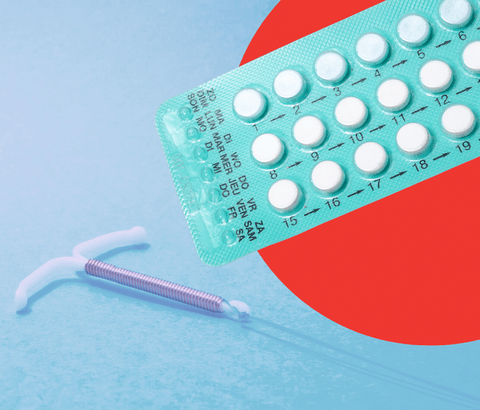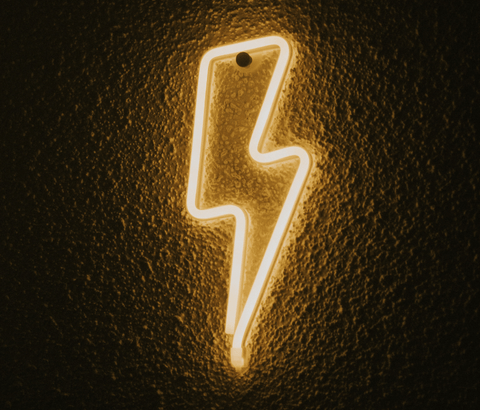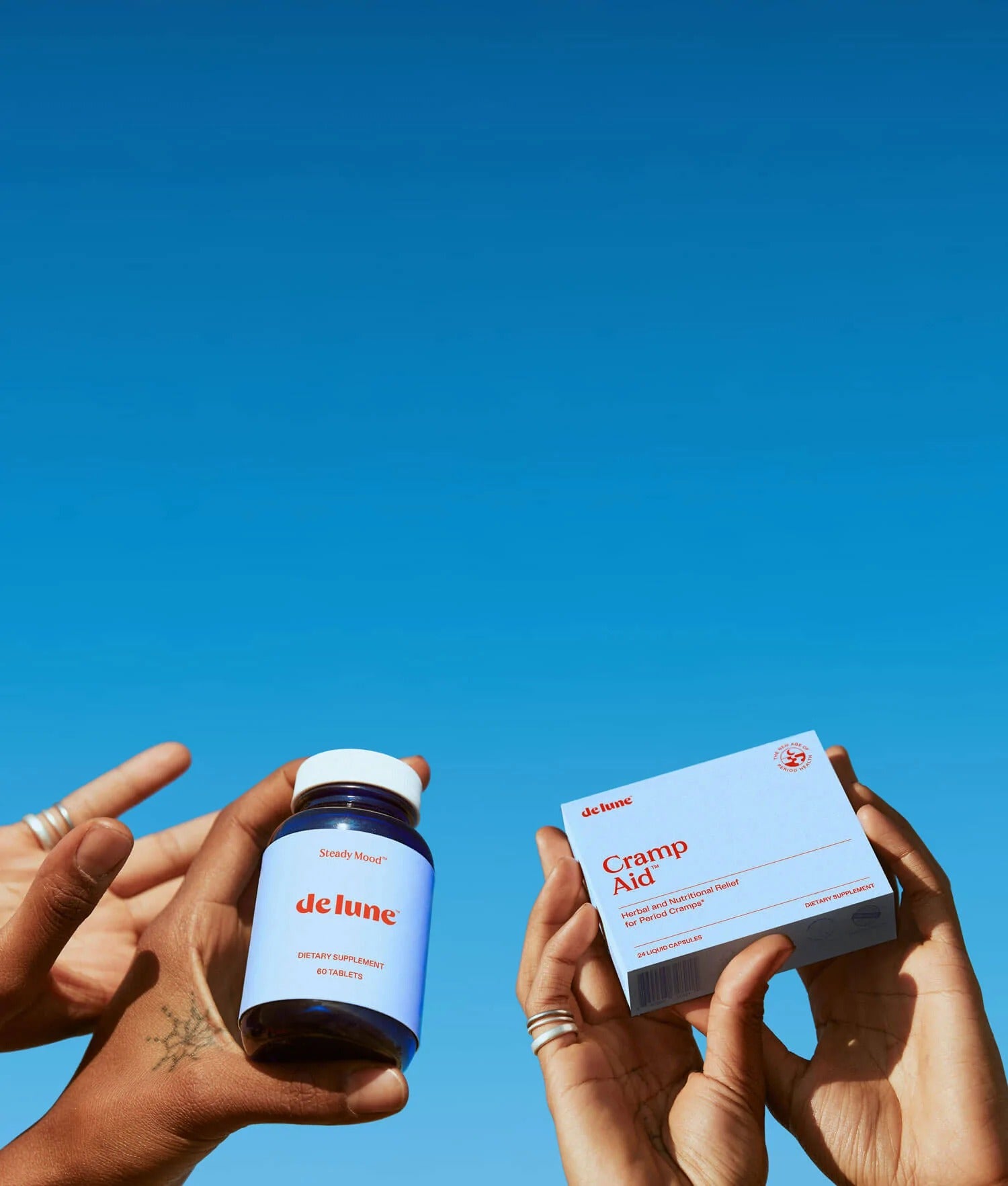If your cycle is always exactly 28 days long, ovulation occurs about 14 days after the first day of your period. But according to the research, if your cycle is always exactly 28 days long, you’re practically a unicorn.
One study measured the cycle lengths of women who identified as having ‘regular’ menstrual cycles, and found 46% of them actually had cycles that varied within a 7 day range. An additional 20% had cycles that varied within a 14 day range (1). Couple that with the ~18% of women who identify as having irregular menstrual cycles (2), and it’s safe to say that most peoples’ cycles are not always exactly 28 days long.
Although cycles lasting anywhere between 21 and 45 days are considered normal (3), you can’t accurately predict your ovulation timing by simply counting 14 days after your period starts if you deviate from the average 28 day cycle.
More detective work is needed, and this article is your guide. It covers:
- Why ovulation timing depends on the length of your cycle
- How to know when ovulation occurs if your cycles are longer or shorter than 28 days
- Why ovulation isn’t just a fertility concern—it’s a big deal for your period, too!
Your ovulation timing depends on the length of your cycle
Ovulation is when one of your ovaries releases an egg.
You only ovulate once per cycle. You may release more than one egg at a time (and potentially have twins or triplets if all those eggs are fertilized). But you’ll never ovulate, then ovulate again without having a period (or a pregnancy) in between.

Ovulation occurs near the middle of your cycle—after your follicular phase, and before your luteal phase. The events play out like this:
Your cycle starts with your period.
Day 1 is considered the first day of steady bleeding (spotting doesn’t count). Periods last 5 days on average, but anywhere between 2 and 7 days is normal. (4)
Your follicular phase varies in length.
It starts when your period starts (i.e. Day 1 of your cycle), and ends with ovulation. The length of your follicular phase depends on how quickly you’re able to make enough of the hormones that activate your follicles—sacs in the ovaries that each contain an egg. Once activated, one dominant sac will rupture and release its egg.
Ovulation takes about 1 day.
The release of an egg triggers the production of hormones that prepare the body for a potential pregnancy.
Those pregnancy hormones rise and fall during your luteal phase.
They rise during the first half of the luteal phase, and you may feel a natural high and more energy as a result. Then they fall during the second half, and you may experience PMS symptoms.
If no egg was fertilized that cycle, pregnancy hormones are no longer needed. Their levels will continue to fall, which will trigger a period, and the cycle starts over again.
The amount of time it takes for those luteal phase hormones to rise and fall is fairly consistent: right around 14 days, or 10-16 days for some people.
Normal menstrual cycles vary between 21 and 45 days mostly because the length of the follicular phase varies widely from person to person; anywhere between 7 and 21 days is common, but it can last even longer, especially if you started menstruating within the last few years.
Generally, the longer your follicular phase, the later ovulation will occur, and the longer your cycle overall.

How to know when ovulation occurs for cycles longer or shorter than 28 days
Because the length of the luteal phase is relatively rigid, it’s easy to determine when you ovulated (past tense) once your period starts: about 14 days ago. It’s not as easy to determine when you will ovulate. But a few tools can help you estimate:
Tracking your cycle
Tracking can help you identify patterns in your cycle and estimate a cycle length that’s typical for you. You can roughly calculate your ovulation day by subtracting 14 days from your average cycle length.
Say your average cycle is 32 days (with Day 1 being the first day of your period). A 14-day luteal phase would put your ovulation day around Day 18 of your cycle.
Say your average cycle is 22 days. A 14-day luteal phase would put your ovulation day around Day 8 of your cycle.
Keep in mind it’s normal for your cycle length to fluctuate from month to month, so this method is just an estimate.
Also keep in mind this method assumes your luteal phase is 14 days long. While 14 days is typical for most, the luteal phase can vary between 10 and 16 days. If you’re on either end of that range, it’s more accurate to determine your average ovulation day using an ovulation test strip, or by taking your temperature.
Ovulation test strips
Ovulation test strips are over-the-counter sticks you pee on, and they reveal when you’ll ovulate. It’s recommended you start using ovulation test strips no later than Day 8 of your cycle, then continue to test every day until you see a positive test. A positive test usually means you’ll ovulate within the next 24 to 36 hours. (5)
Tracking your temperature
If you were to take your temperature when you wake up every day, you’d notice a natural half-a-degree rise right after ovulation. Temperature taking is a key component of the Fertility Awareness Method (FAM) of birth control, as it determines which days of your cycle you’re most likely to get pregnant by determining when you’ve ovulated. Some FAM programs come with a high-quality thermometer and tracking app to make it easier to get into the habit.
Note, however, that this method reveals when you’ve already ovulated, not when you’re going to ovulate. But you can use temperature tracking to determine which day of your cycle you typically ovulate, which you can then use to help predict your ovulation day for future cycles.
Mild pelvic pain
Some people can actually feel themselves ovulating because they experience pain from ovulation, or mittelschmerz—a German word meaning “middle” and “pain”, because ovulation occurs in the middle of the menstrual cycle.
Mittelschmerz pain may be accompanied by spotting, may be concentrated on one side of the pelvic area, and may switch sides from month to month, depending on if the right or left ovary released an egg that cycle.
Mittelschmerz pain is similar to the temperature-taking method in that it reveals when you’ve already ovulated, not when you’re going to ovulate. But if you note which day of your cycle you experience mittelschmerz, it can help you determine your average ovulation day, which you can then use to help predict when you’ll ovulate in future cycles.
Fertile mucus
Fertile mucus, or cervical fluid, is a copious, slippery, white vaginal discharge. While vaginas are lubricated with a whitish-yellow discharge throughout the whole menstrual cycle, fertile mucus is only produced when estrogen levels are high. It’s typically made in larger amounts compared to regular vaginal discharge, and it looks and feels like a milky, raw egg white.
Because estrogen levels are usually at their highest just before ovulation, a glob of fertile mucus in your underwear may be a clue you’re going to ovulate soon. But it’s just a clue—not a rule. For people with longer cycles, fertile mucus may stop and start before ovulation occurs. It’s also possible to make fertile mucus without ever actually ovulating, or after ovulation has already happened.

Using hormonal birth control?
If you’re on the pill and are curious when you ovulate, the answer is: you don’t (as long as the pill doesn’t fail). Hormonal birth control prevents pregnancy by shutting down ovulation, so you won’t ovulate again until you come off the pill.
Ovulation matters for reasons other than fertility, too
Ovulation is a superpower awarded to all cycling bodies—not just those who are trying to become pregnant.
Ovulation has health benefits totally separate from pregnancy.
The best part is progesterone—a hormone the ovaries make exclusively following ovulation. While it’s been branded a pregnancy hormone, progesterone is good for your health overall. It’s been shown to reduce inflammation, build muscle, promote quality sleep, protect against heart disease, and calm stress (6, 7, 8, 9, 10, 11), among other benefits.
Ovulation helps make periods easier.
Generally, the more progesterone you make after ovulation, the lighter your period (12), and fewer painful cramps and PMS symptoms come with it (13). Ovulation timing also determines period timing, so consistent ovulation helps keep periods regular.
We designed Steady Mood—our daily multivitamin for multi-symptom PMS relief—to support healthy progesterone production and overall hormonal health throughout all the phases of the menstrual cycle, including ovulation. By nourishing your cycle with the nutrients and herbs it needs to thrive, Steady Mood can help make your period days better and your ovulation days amazing.*
This information is for education purposes only. It is not a substitute for professional medical advice, and is not intended to diagnose, treat, cure, or prevent any condition.
References
1. Creinin, M. D., Keverline, S., & Meyn, L. A. (2004). How regular is regular? An analysis of menstrual cycle regularity. Contraception, 70(4), 289-292.
2. Rostami Dovom, M., Ramezani Tehrani, F., Djalalinia, S., Cheraghi, L., Behboudi Gandavani, S., & Azizi, F. (2016). Menstrual cycle irregularity and metabolic disorders: a population-based prospective study. PLoS One, 11(12), e0168402.
3. World Health Organization multicenter study on menstrual and ovulatory patterns in adolescent girls. II. Longitudinal study of menstrual patterns in the early postmenarcheal period, duration of bleeding episodes and menstrual cycles. World Health Organization Task Force on Adolescent Reproductive Health. J Adolesc Health Care. 1986 Jul;7(4):236-44. PMID: 3721946.
4. https://my.clevelandclinic.org/health/articles/10132-normal-menstruation
5. Tiplady, S., Jones, G., Campbell, M., Johnson, S., & Ledger, W. (2013). Home ovulation tests and stress in women trying to conceive: a randomized controlled trial. Human reproduction, 28(1), 138-151.
6. Melcangi, R. C., Giatti, S., Calabrese, D., Pesaresi, M., Cermenati, G., Mitro, N., ... & Caruso, D. (2014). Levels and actions of progesterone and its metabolites in the nervous system during physiological and pathological conditions. Progress in neurobiology, 113, 56-69.
7. Smith, G. I., Yoshino, J., Reeds, D. N., Bradley, D., Burrows, R. E., Heisey, H. D., ... & Mittendorfer, B. (2014). Testosterone and progesterone, but not estradiol, stimulate muscle protein synthesis in postmenopausal women. The Journal of Clinical Endocrinology & Metabolism, 99(1), 256-265.
8. Schüssler, P., Kluge, M., Yassouridis, A., Dresler, M., Held, K., Zihl, J., & Steiger, A. (2008). Progesterone reduces wakefulness in sleep EEG and has no effect on cognition in healthy postmenopausal women. Psychoneuroendocrinology, 33(8), 1124-1131.
9. Mong, J. A., Baker, F. C., Mahoney, M. M., Paul, K. N., Schwartz, M. D., Semba, K., & Silver, R. (2011). Sleep, rhythms, and the endocrine brain: influence of sex and gonadal hormones. Journal of Neuroscience, 31(45), 16107-16116.
10. Prior, J. C. (2014). Progesterone within ovulatory menstrual cycles needed for cardiovascular protection: an evidence-based hypothesis. Journal of Restorative Medicine, 3(1), 85-103.
11. Gordon, J. L., Girdler, S. S., Meltzer-Brody, S. E., Stika, C. S., Thurston, R. C., Clark, C. T., ... & Wisner, K. L. (2015). Ovarian hormone fluctuation, neurosteroids, and HPA axis dysregulation in perimenopausal depression: a novel heuristic model. American Journal of Psychiatry, 172(3), 227-236.
12. https://www.ncbi.nlm.nih.gov/books/NBK279293/
13. Rapkin, A. J., Morgan, M., Goldman, L., Brann, D. W., Simone, D., & Mahesh, V. B. (1997). Progesterone metabolite allopregnanolone in women with premenstrual syndrome. Obstetrics & Gynecology, 90(5), 709-714.








